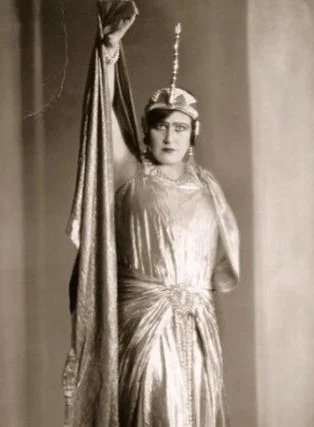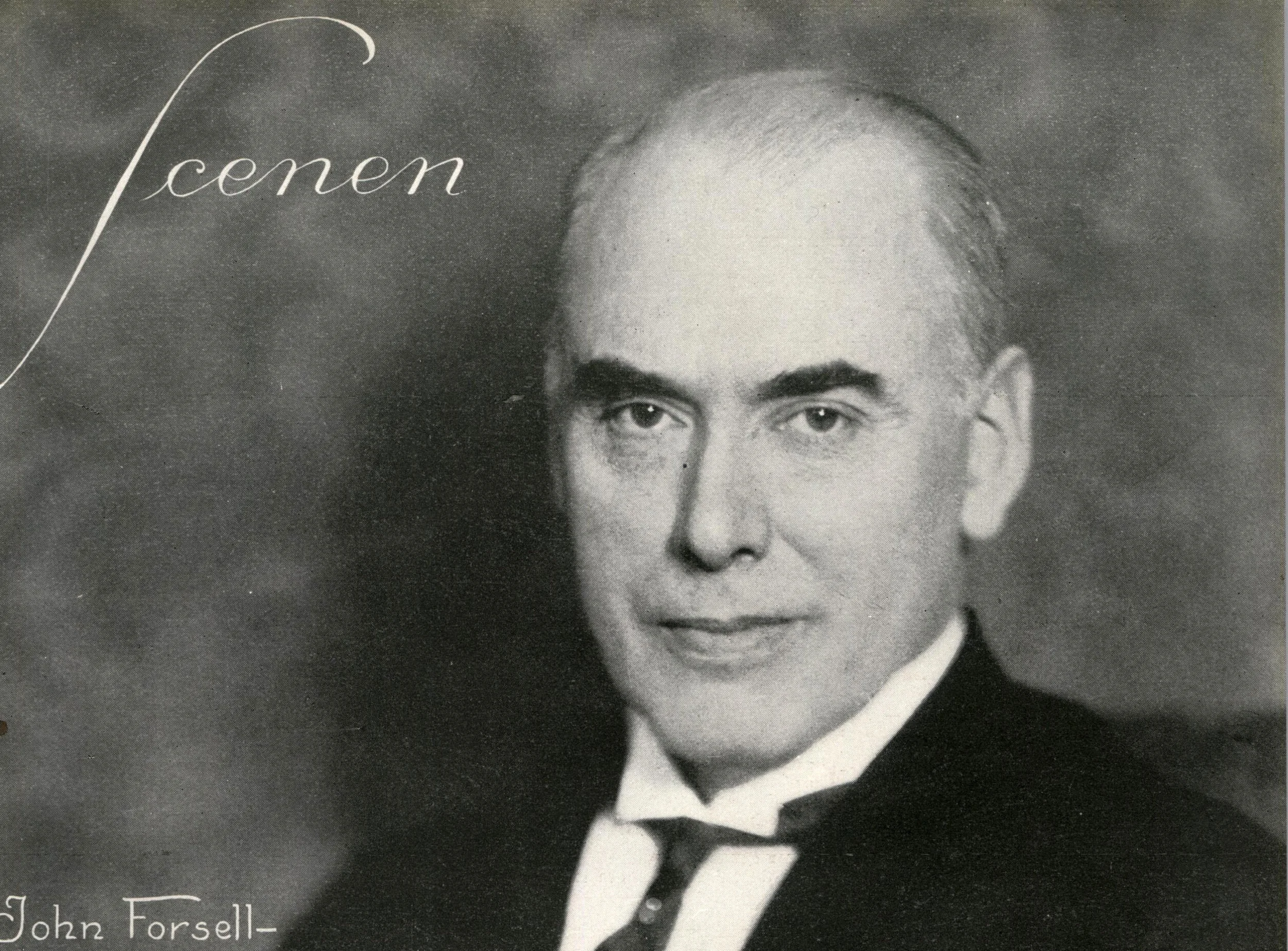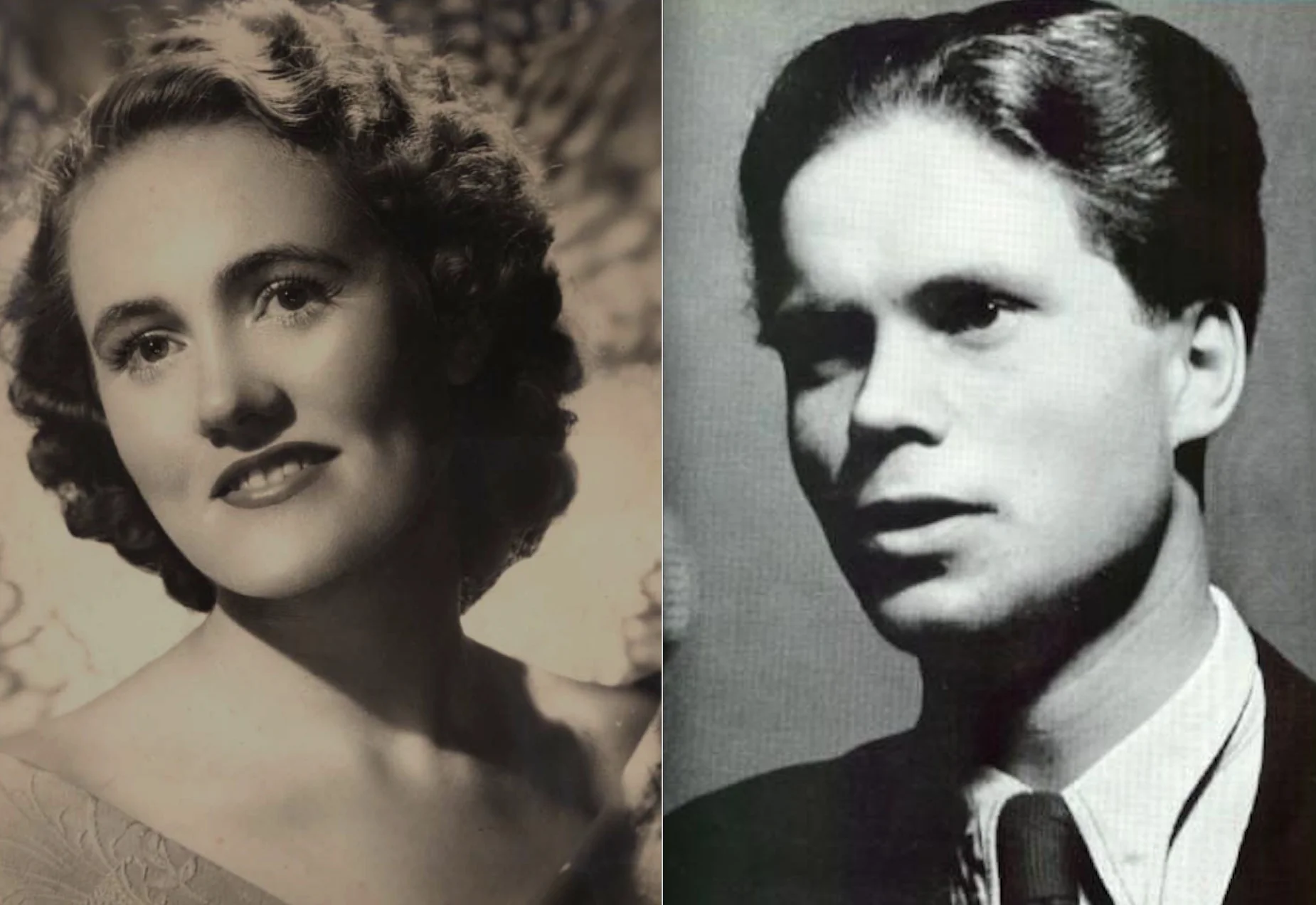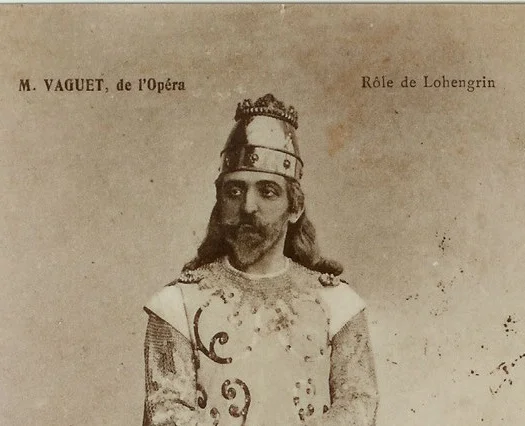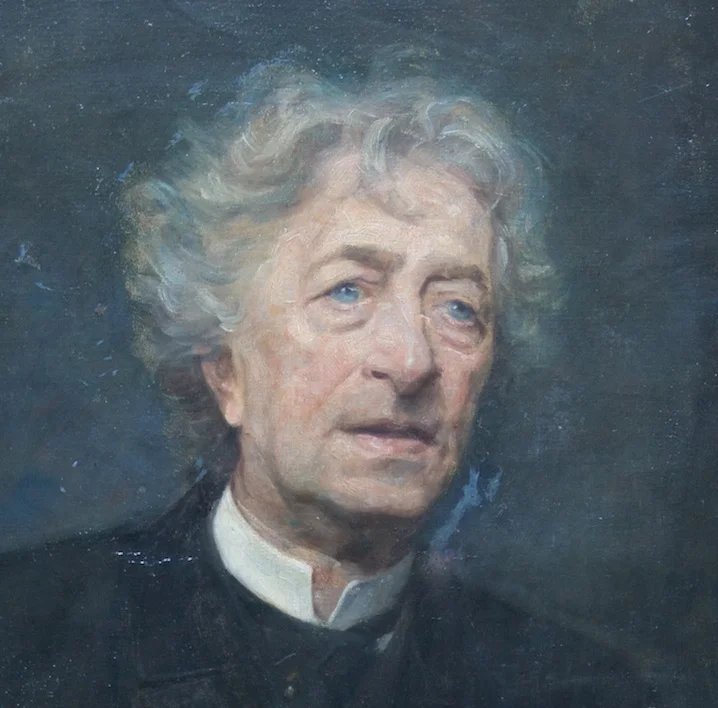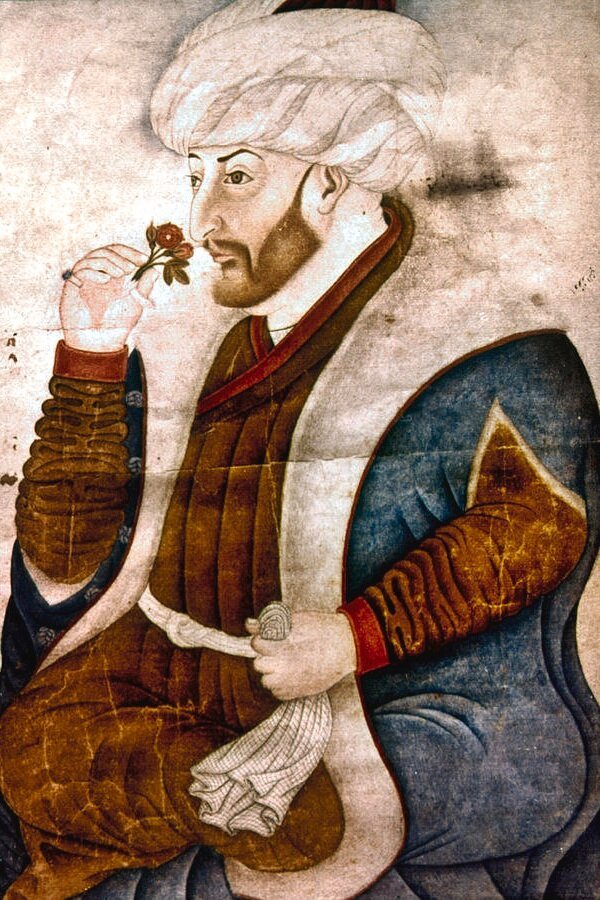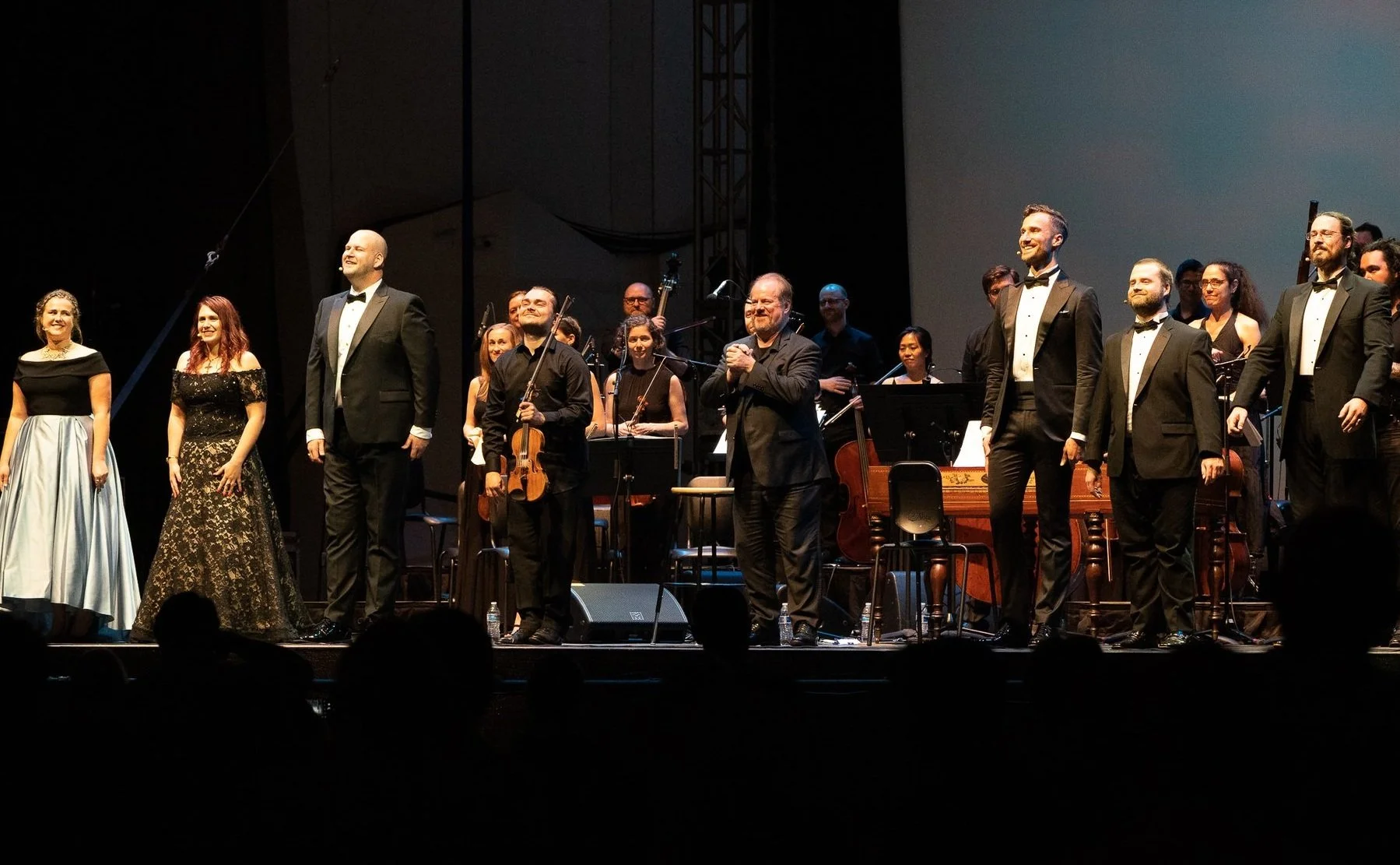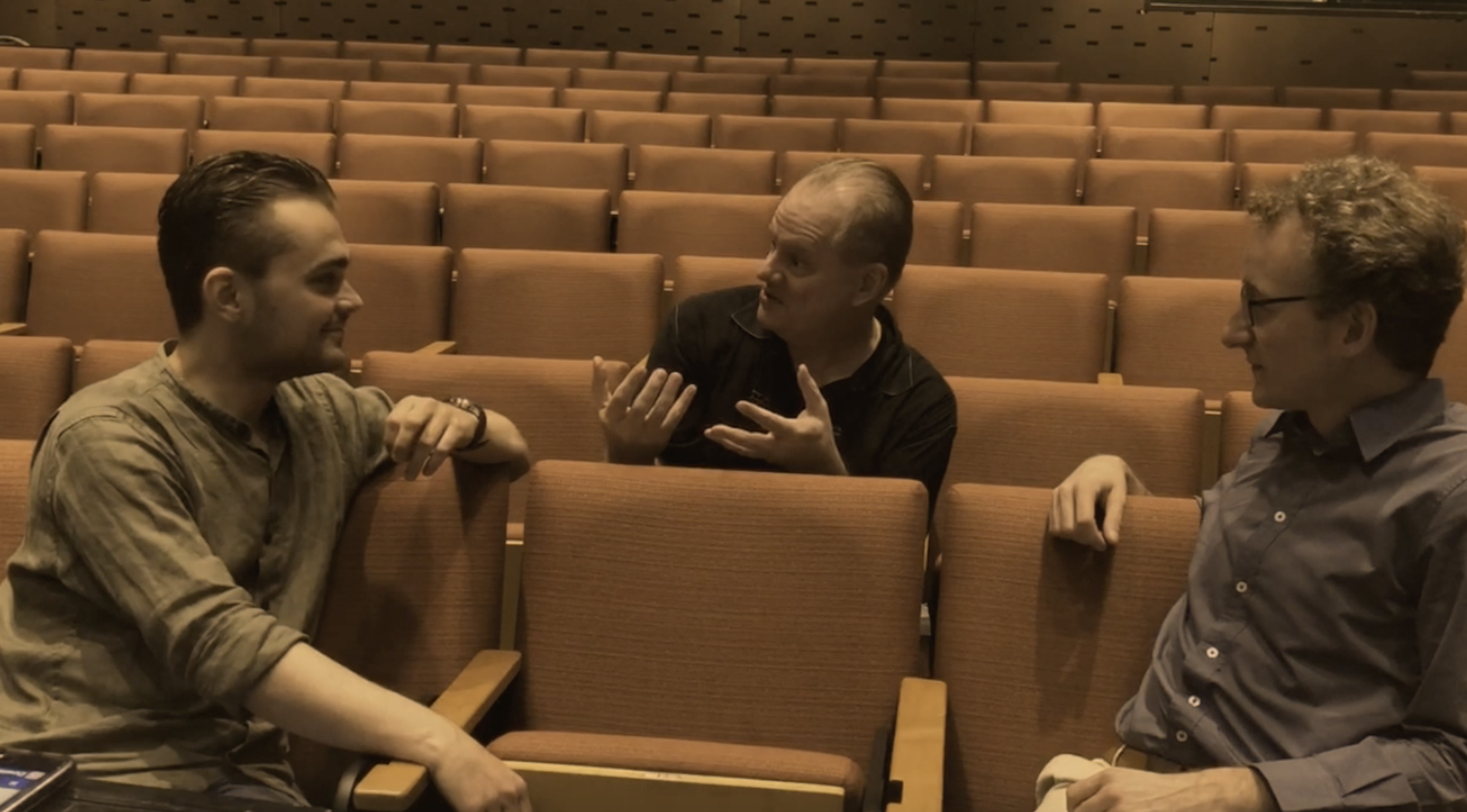Vincenzo Bellini (1801~1835)
I Capuleti e i Montecchi
Sunday, July 21, 2024
Alexander Kasser Theater, Montclair State University
Thursday, July 25, 2024
Rose Theater, Jazz at Lincoln Center
Libretto: Felice Romani
Premiere: 11 March 1830, Teatro La Fenice, Venice
| Giulietta, daughter of Capellio | Alina Tamborini |
| Romeo, chief of the Montecchi | Stephanie Doche |
| Tebaldo, a partisan of the Capuleti, betrothed to Giulietta | Robert Kleinertz |
| Capellio, chief of the Capuleti | Michael Leyte-Vidal |
| Lorenzo, physician and retainer of the Capuleti | Kyle Oliver |
Teatro Nuovo Chorus and Orchestra
Jakob Lehmann, primo violino e capo d’orchestra
Will Crutchfield, maestro al cembalo
Immortal story, unique re-telling
Many, many composers set to music the classic story of Romeo and Juliet, but as far as we know, Vincenzo Bellini had never considered doing so until about two months before the premiere of I Capuleti e i Montecchi, which took place on March 11, 1830 at Venice's Teatro La Fenice.
He had definitely contemplated writing for Venice, and the Venetian authorities were eager to get him: the young Sicilian already had two clamorous successes to his name, Il Pirata and La Straniera, and he was in demand throughout Italy.
“Bellini was enormously ambitious”
Bellini was enormously ambitious, yet strangely reluctant to write at the pace of other composers. His competitors routinely produced three or four operas a year, sometimes more, but he preferred to write just one. Instead, as soon as he had made a name for himself, he demanded fees three or four times higher than other leading composers were receiving.
That is why his negotiations with the president of La Fenice for the 1829-30 season had come to nothing: he wanted 10,000 francs, and the stunned impresario, after consulting with his colleagues, decided to put off the engagement to 1830-31. (Bellini accepted 8,000 francs, but happily pointed out in a letter that the other composers were getting "only 3,000, or at most 3,500.")
An opera at top speed
“a colorful circus of competition... rushed work and missed deadlines”
But as matters turned out, he was destined to write for the earlier season after all, and to get his audacious original asking price. Italian opera in the early 19th century was a colorful circus of competition, intrigue, triumphs, fiascos, rushed work and missed deadlines, contracts enforced by physical detention and police action -- all for the purpose of satisfying a public hungry for dozens of new works every year.
In this case, Giovanni Pacini (one of the leading lights of the day, with 37 operas already to his credit and 47 more to follow) was booked to write for La Fenice, but the impresario had reason to doubt that he would manage to fulfill his contract, because of his obligations to still more influential theaters (La Scala and the San Carlo of Naples) just before and after.
“a successful plan B”
This impresario was Alessandro Lanari (the same one who eventually brought Carolina Uccelli's Anna di Resburgo to the stage). Seeing a chance for a successful "plan B," Lanari engaged Bellini for an easier task: supervising a revival of Il Pirata at the end of 1829. Then on the 5th of January he persuaded the composer to sign a contract agreeing to write a new opera in a hurry if Pacini should renege.
That is what happened. Pacini, years later, blamed the librettist Felice Romani for failing to deliver his text on time. This may have been true (it seems to have been true most of the time for most librettists), but Romani got none of the blame, and showed up in Venice ready to work - to adapt one of his own earlier librettos for his friend Bellini.
Settling on the subject
If the decision to use an old libretto was prompted by sheer haste, the choice of which one was governed by the qualities of the already-engaged singers, whom Bellini had a chance to evaluate in Il pirata. According to the composer's letters, the tenor, Lorenzo Bonfigli, was "a little weak, but roused pleasure" in the public, while the principal bass or baritone was "a salame." About the prima donna, Giuditta Grisi, Bellini was enthusiastic: she "carried her extremely difficult role with such excellence that she became the pillar of the opera." Also present in the company, singing in another work, was Rosalbina Caradori, whose singing Bellini thought very good, though he later recalled the voice as "piccina."
So, planning in a hurry, composer and poet settled on an opera that would center on the two prima donnas, with a modest but "pleasing" role for tenor, and with parts for the lower male voices reducible to secondary status. The ideal candidate: Giulietta e Romeo, which Romani had written for Nicola Vaccai just five years previously, "but he will give it another title," according to another of Bellini's letters. That title, when the Venetian theater concluded terms with Bellini on January 19, was Giulietta Cappelio. Both the title and the form of the Capulets' name remained uncertain until the last moment; in Bellini's manuscript score, they are not "Capuleti" but "Capelletti." In the meantime, he had one month and ten days to finish his opera and get it rehearsed.
Why Romeo is a girl
“ a showcase for two women?”
Romeo and Juliet as a showcase for two women? It seemed so strange to 20th-century operagoers that, when the bel canto revival was gathering steam in the 1960s, I Capuleti e i Montecchi was rearranged as a two-tenor opera, with Giacomo Aragall and Luciano Pavarotti competing for the hand of Renata Scotto. But the vocal casting seems scarcely to have aroused even a comment in 1830. There was a long tradition of Romeo as a role for high voice - for a castrato, in the operas of Pasquali (1742), Marescalchi (1784) and Zingarelli (1796); for a woman in male attire in those of Vaccai and Bellini.
The century-plus reign of the castrati in opera had established an expectation that the protagonist would sing in a high and brilliant vocal range, and there had all along been female sopranos and contraltos costuming themselves as heroes to share these roles with the castrati who set the standards for them.
So even as the practice of castrating young singers yielded to moral protests, and as fewer and fewer of them were found on the operatic stage, composers went on for quite a while pitching roles in the familiar range. Quite a few of Rossini's serious Italian operas have a male role for contralto. This tradition was on the wane by 1830, but far from dead. The first important Italian composer to turn his back on it completely was Verdi, and even he - briefly - accepted the idea of writing Ernani with a woman in the title part.
Brush out your Shakespeare
None of the Romeo and Juliet operas just listed had anything to do with Shakespeare, and neither does Bellini's. The story, after all, is an Italian one, and Shakespeare's Italian sources had gone on for centuries being used by Italian artists. The ingredients common to all are the enmity of two noble households, the star-cross'd love between two of their offspring, and the tragic misunderstanding by which Juliet's feigned death provokes Romeo's real suicide.
“ Bellini rose to their challenge”
In both Zingarelli's and Vaccai's settings, the lament of Romeo in the tomb of the Capulets was hailed as a masterpiece of musical tragedy, and both those operas were fresh in memory when Bellini took on the subject. Giuditta Pasta (later Bellini's first Norma and Sonnambula) had kept Zingarelli's opera current through the mid-1820s, and Vaccai's had attracted all the leading contraltos of the period. When the new opera went to La Scala later in 1830, it played to an audience that had seen both the Zingarelli and the Vaccai settings within the previous six seasons. Bellini rose to their challenge -- though, as we will see, his response met with some dissent early in the history of I Capuleti.
“haunting, hypnotic beauty”
To finish the opera in time, Romani reduced the libretto from 890 lines of verse to 585 (some of them new), and Bellini - who could not, even under pressure, compose at the whirlwind pace of Rossini or Donizetti - recycled about half of the score from the only flop of his career (Zaira, received with hisses at Genoa in 1829). The resulting work is of haunting, hypnotic beauty. It is inevitably unbalanced: the two lead singers appear practically without a moment's rest from the time they first enter; only one other character (the tenor) has an aria at all, and it happens before they start!
“a magical nocturnal world of hopeless love”
But this very imbalance now seems a part of its special character. Romeo and Juliet inhabit a magical nocturnal world of hopeless love and erotic death-longing, surrounded by an implacably harsh daylight world of familial obligation, military necessity, unyielding order. Like Tristan and Isolde, they foresee and predict that their passion must find its consummation in the tomb. Richard Wagner, late in life, told his wife that he had conceived his first ideas for Tristan while conducting I Capuleti.
Early misadventures, lasting enchantment
“constructed from movable, replaceable parts”
The unbalanced aspect of the score, however, created problems at a time when operas were still (reasonably, from the standpoint of the day) expected to provide a certain balance of opportunities, and to be constructed from movable and replaceable parts. Early documented performances featured the interpolation of arias and scenes by Mercadante, Celli, Rossi, Ricci and still other composers. Sometimes this was for the purpose of providing solos for characters to whom Bellini gave none. But the most frequent interpolation - for a while, a real "tradition" of such standing that it found its way into published scores - was to replace Bellini's tomb scene with that of Vaccai.
This includes a truly beautiful aria, "Ah, se tu dormi, svegliati," especially favorable to a lower-voiced Romeo such as Maria Malibran, who always performed the opera in this form. (The whole Vaccai finale will be heard in a pre-opera recital by Teatro Nuovo's Resident Artists.) In any case, sometimes with Vaccai's ending and sometimes with the original, Capuleti joined the list of Bellini's triumphs, and was part of the standard repertory for several generations.
The only singer from the original cast who continued to be associated with the opera was its Romeo. It is easy to get the Grisi sisters, Giuditta and Giulia, confused, as both were prominent and successful. Giuditta, the original Romeo, died at the age of 34 in 1839. It was her younger sister Giulia who sang in two other Bellini premieres - Norma, as Adalgisa, and I Puritani - and was the first Norina in Donizetti's Don Pasquale. In Paris in 1833, the sisters sang together in Capuleti - but Giulia substituted an aria by Marliani for "Oh quante volte," today the opera's most famous number, and Giuditta adopted the Vaccai finale!
Giuditta, incidentally, was apparently less satisfied with Bellini than he with her. When she repeated Romeo in the very first revival -- in Milan later in 1830 -- she wrote a long letter to the impresario explaining why her entrance aria was unsatisfactory, and proposed to pay either Pacini or some other composer to write her a better one, closing with the hope that she would thus show "that pig Bellini" a thing or two. (She seems to have backed down and sung the original.)
“a genre that is entirely new... a sweetness that cannot be defined”
All of this quibbling and cobbling seems fairly ridiculous to anyone who has come under the spell of the opera as Bellini wrote it. Wagner was one who did. Another was the anonymous but extraordinarily perceptive critic of the Gazzetta privilegiata di Venezia, who wrote after the premiere of "beautiful pieces in a genre that is entirely new, not bombastic, but thoughtful, harmonious, very sweet...one of the virtues of [Bellini's] music is a certain softness of manner, certain facile melodies that ravish one with a sweetness that cannot be defined."
“He speaks with song”
That remains true nearly two centuries later. Also: "He speaks with song and with the orchestra." Bellini's use of isolated fragments of instrumental writing to create a kind of psychological "inner space" - between and behind the lines of the poetry - was something almost unprecedented. It is at its most eloquent in the first-act duet and the tomb scene of I Capuleti - and it is in those moments that we can almost hear the ideas of Tristan being born in another musical dramatist's imagination.
A note on the performing edition
The Ricordi critical edition by Claudio Toscani, published in 2003, made available for the first time Bellini's revisions to I Capuleti for the Milan revival of December 1830. Most of these are simply adaptations of the music to different voices - often fascinating for what they reveal about performing style, but not affecting the musical substance. In one spot, though, he added a page that seems too important to omit.
“Bellini added a dramatic page”
Giulietta's second-act aria, when she takes the sleeping-potion from Lorenzo, ends on a question - in effect, "what if this doesn't work, and I never wake again?" That question goes unanswered in the familiar version of the score, but for Milan Bellini added a dramatic page in which Giulietta declares herself ready to embrace death, if she may die for Romeo and may thus be freed from her harsh father.
There is a problem to integrating it with the original score, however. The Milanese Giulietta had a much lower voice, and so the aria was transposed down a major third. But the outcry on the added page dwells at the very top of that lower range, so that if it is transposed it back up to the key of the original aria, it becomes ridiculously high even for a high soprano. What we will hear at Teatro Nuovo, therefore, is an adaptation that attempts to preserve its character while adjusting the vocal line to a less stratospheric range.
- Will Crutchfield














![Image 2 - Henry T. [Harry] Burleigh - Detroit Public Library.jpeg](https://images.squarespace-cdn.com/content/v1/596bb4e703596e837b624445/1591713684327-N7HW488JSZ7EN8T5AJSR/Image+2+-+Henry+T.+%5BHarry%5D+Burleigh+-+Detroit+Public+Library.jpeg)







